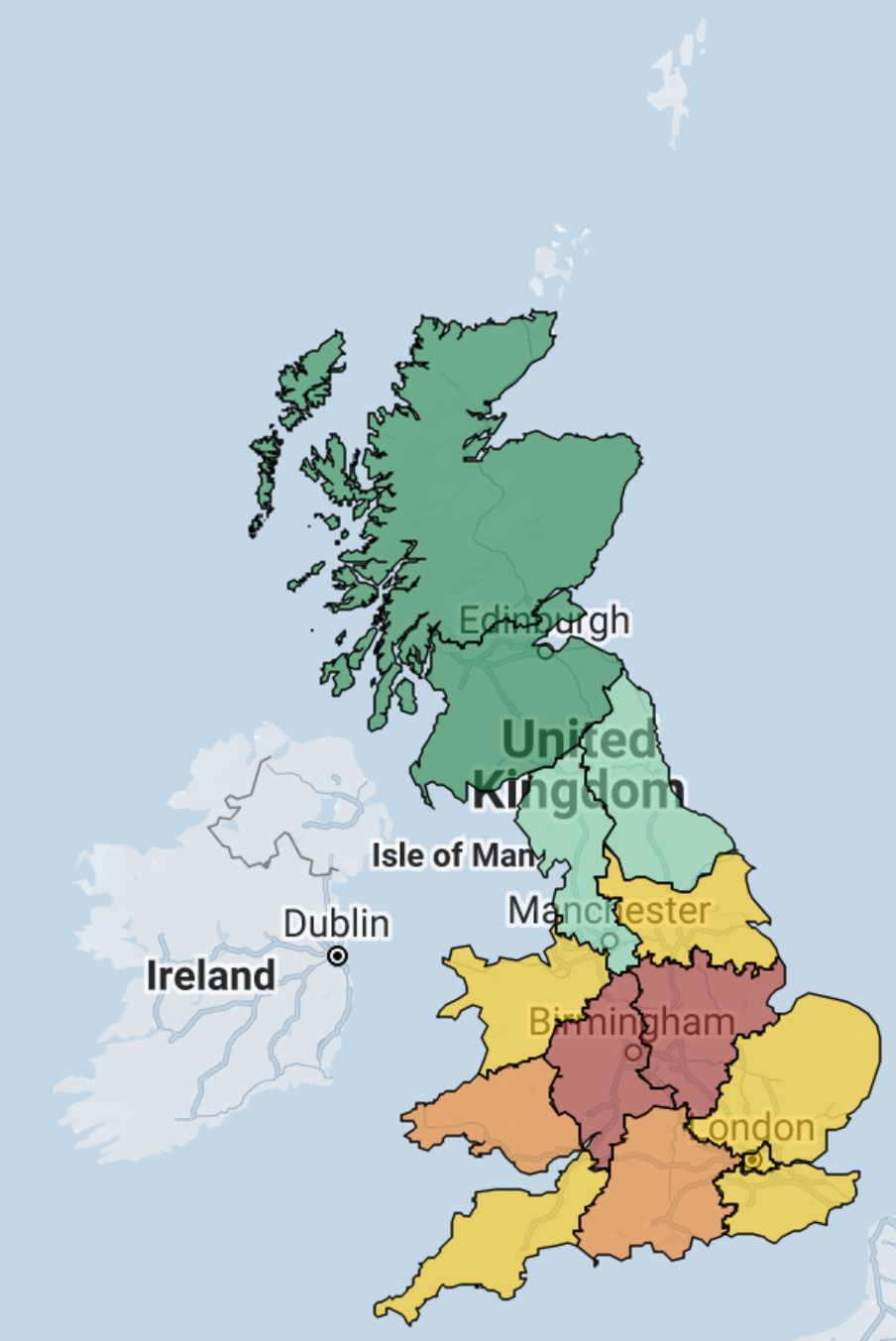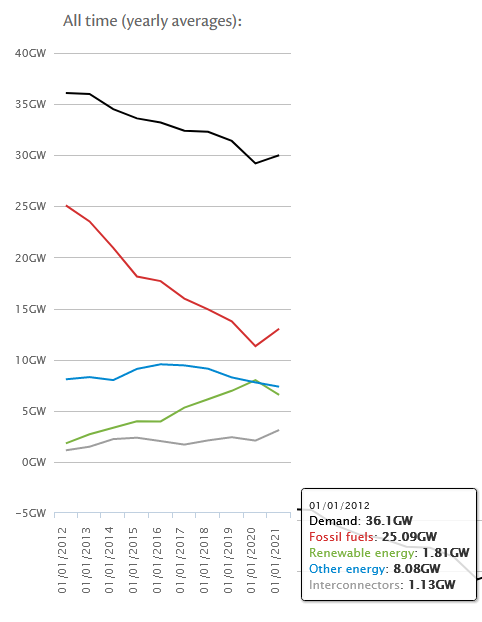A couple of months ago now I bought an electric car and, as a numbers person, I have been curious about how clean it is. Clean in this case referring to CO2 emissions1.
Before I go much further, I should declare that I still work for an oil refinery2. This post is entirely my own thoughts on the matter and I represent the views of no one else.
The driving factor for buying an electric car was to 'be greener/cleaner'3. I particularly disliked sitting in traffic, hearing the diesel engine tick over, knowing it was spewing out all sorts of nasties into the environment. This post's main concern is with CO2 emissions, though I would probably have switched to an electric car anyway to avoid NOX and particulate pollution.
Of course an electric car doesn't produce any emissions as it is being driven, it is ultimately only as clean as the electricity that powers it. So how green/clean is my car?
Green Energy Tariffs
In our house, we are on a green energy tariff. That means that our electricity supplier is supposed to source our electricity from renewable sources. If the electricity is sourced from renewables, the emissions are zero and I can end this post. Right?
Well, for a start I don't yet have a home charger installed, so I am relying on the public charging network. And also, 'green tariff's feel like a bit of a cheat. I am getting the energy from the grid in general. Any 'green' energy I don't use will go to someone else. I am not sure claiming 0g CO2 is an honest reflection of the effect of charging my car.
Local Network Intensity
I had a look at CarbonIntensity.org.uk who calculate the carbon intensity, that is the grams of CO2 per unit of electricity (kWh) across Great Britain and provide a nice API to include in your own applications. They even break it down by region:

Screenshot from carbonintensity.org.uk
After looking at this site over a couple of weeks, I noticed that Scotland is (almost) always very green. Whilst the English and Welsh regions change colour depending on the time of day and the weather, Scotland remains green through a combination of Wind and Nuclear.
While I would love to run away claiming 0g CO2/kWh, this feels exactly the same as my home usage. While the energy in my local region may have been produced by nuclear or wind, anything I hypothetically don't use, would be exported to a region that has a higher CO2 intensity.
Perhaps I should look at the whole grid.
The Grid CO2 Intensity is Changing
Before going much further, I think it is important to say that the Grid CO2 Intensity is changing rapidly. Back when I bought my previous car, the grid was mostly powered by Coal, but over the last decade, coal usage has plummeted. I found some lovely graphs created by Kate Rose Morley that demonstrate the significant changes already made:

Other changes include an overall reduction in demand for energy, a general reduction in energy from fossil fuels and an increase in renewable supply:

View more of the graphs at grid.iamkate.com.
My Grid CO2 Intensity
Using the carbon intensity API, I was able to calculate the CO2 intensity for all of my charges over the last two months4 and have worked out that my electricity was 195g CO2/kWh which works out to 31g CO2/km. I believe5 my old car was supposed to be 155 g CO2/km, so this is a significant improvement.
Marginal Energy Intensity
I was about to publish this post when I had another thought. Is this valid? What actually happens when I plug my car in?
The energy supplied to the grind does not increase uniformly from all generators. Some generators will already be operating at maximum. Some will have spare capacity. Those with spare capacity will increase to meet my extra demand.
So the question becomes, what is the carbon intensity of these marginal generators?
This is a much harder question to answer. If there is lots of wind, they sometimes have to turn some turbines off (not so much in the last month). In this case the carbon intensity would be 0. When the wind turbines are all on (or there is no wind) gas is usually substitute which has a CO2 intensity of 394g CO2/kWh.
There are many other generators as well as interconnectors to Europe that complicate this further. But assuming the worst case scenario of all my energy is coming from gas, my car's intensity is about 64g CO2/km, still significantly lower than the old diesel.
In fact, just for fun, I calculated that even if all my electricity was generated using coal at 937g CO2/kWh, this would still beat my old car with an average 149g CO2/km. So even when assuming getting the perfect fuel economy from the old car and that figure does not include any emissions for refining the fuel.
Summing Up
I am still not sure which figure I should be using for my CO2 km intensity, but in any case it is significantly lower than my old car and it will continue to get better as the grid gets cleaner and newer technologies come online.
- although I have been cleaning it more than the old one ↩
- I have received a mix of reactions from my colleagues. Some teasing, mostly curiosity. ↩
- No, that pun was not intended, I spotted it when editing but decided to leave it ↩
- Yes I have recorded all charges in a spreadsheet -- I told you I was a numbers person ↩
- I never actually measured it myself ↩
« Four Hours of Freedom
Why I Stopped Running »


Comments
I would love to know what you think. To comment on this article, send me an email
No comments yet.